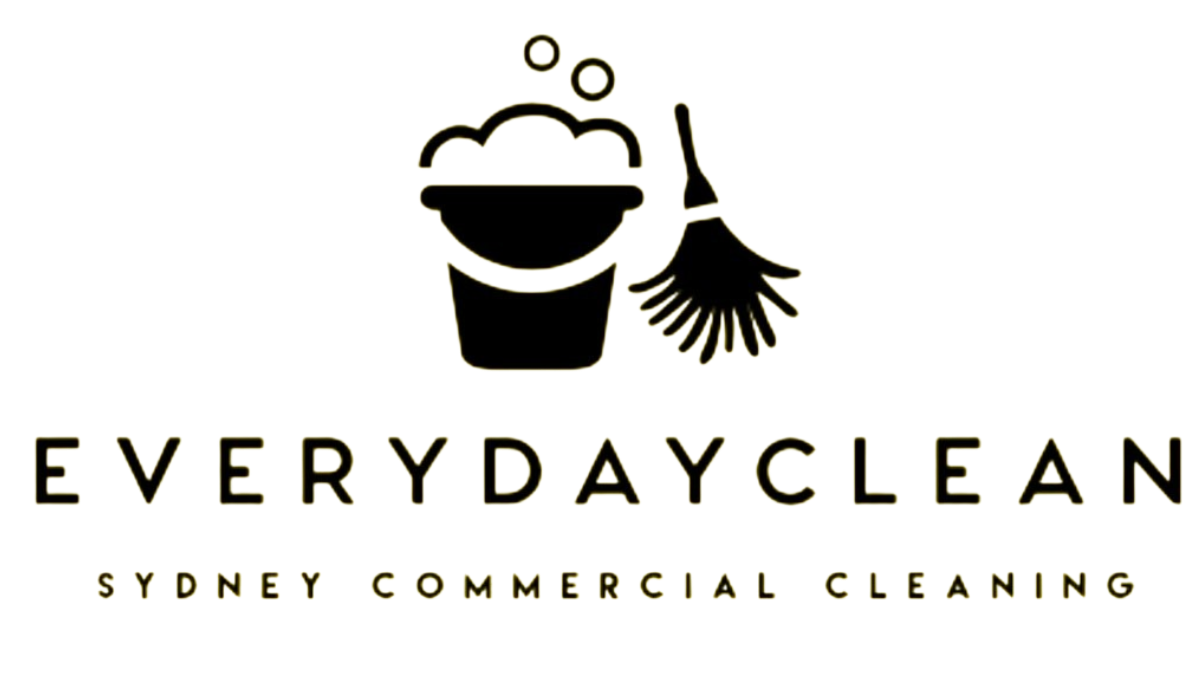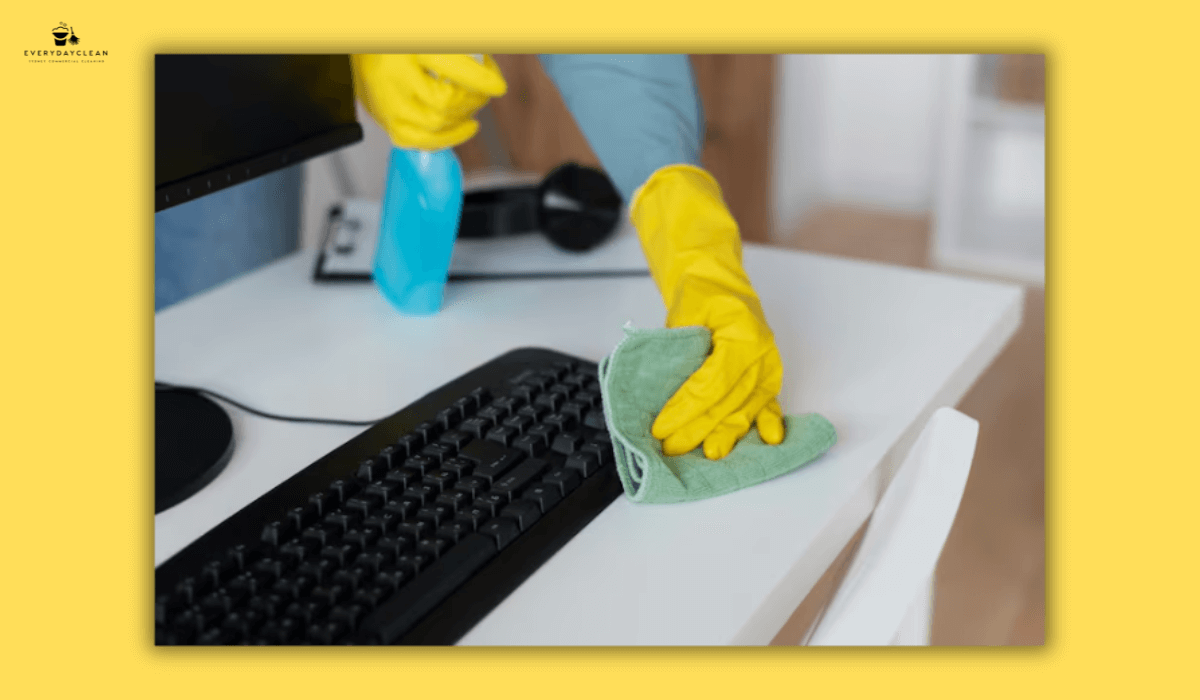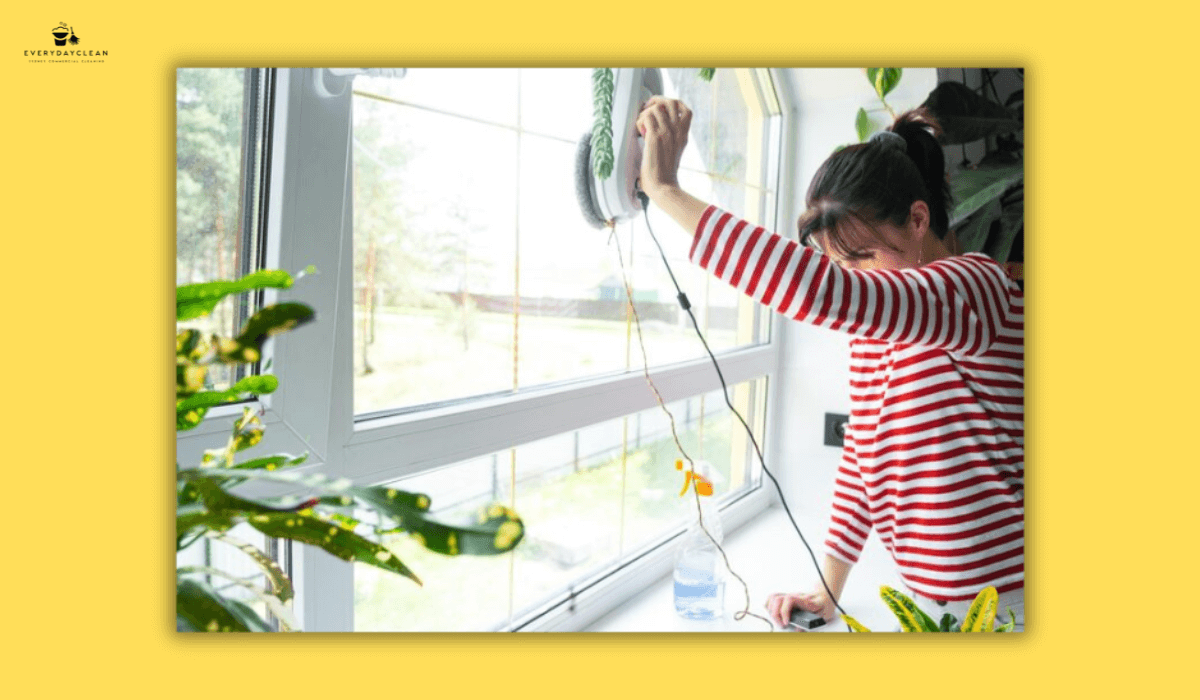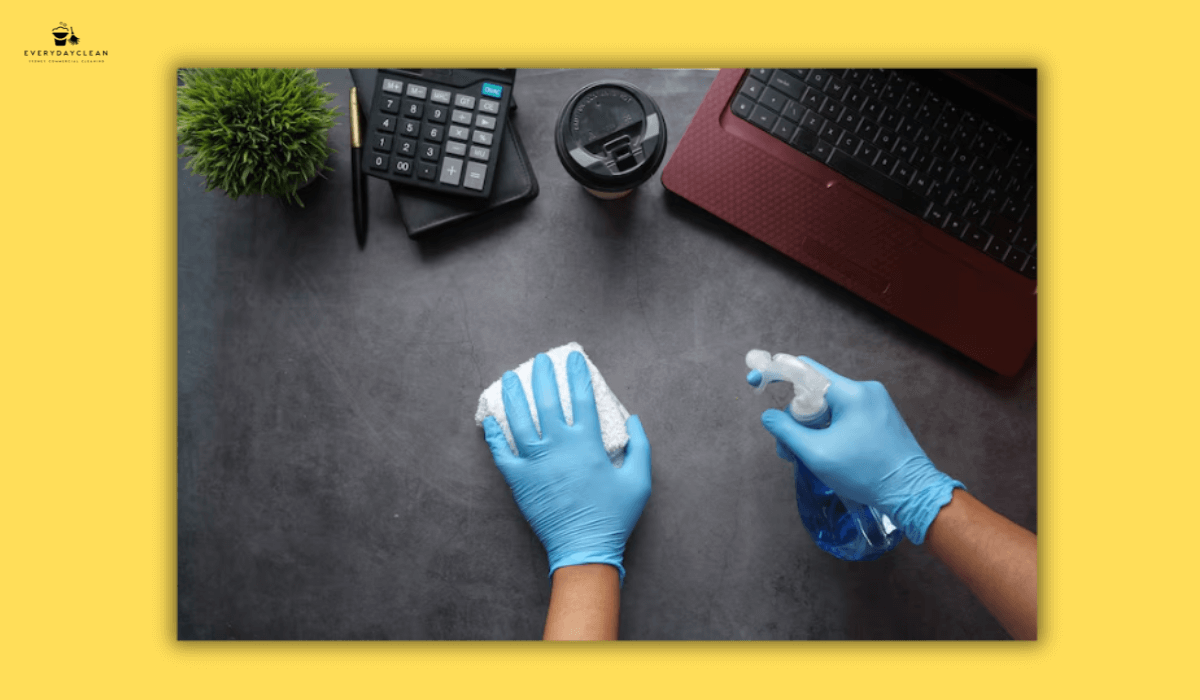10-Point Daycare Cleaning Checklist
A daycare cleaning checklist outlines the essential cleaning tasks that keep childcare centres hygienic, compliant, and safe for children. Daily routines should include wiping down high-touch surfaces, disinfecting toys, sanitising tables, and sweeping or mopping floors to remove dirt and germs. Weekly cleaning should cover laundering bedding, deep-cleaning bathrooms, and dusting hard-to-reach areas to reduce allergens and odours. Monthly tasks, such as washing curtains, disinfecting fridges, and cleaning air vents, help reset the environment for long-term freshness. All cleaning products used in a daycare must be child-safe, low in fragrance, and applied according to manufacturer guidelines to ensure both cleanliness and safety. This guide provides a complete daycare cleaning checklist to help centres maintain spotless, compliant spaces year-round. Centres can also explore our dedicated child care cleaning services for ongoing support beyond in-house routines.
1. Daily Daycare Cleaning Checklist
Daily cleaning tasks maintain immediate hygiene and prevent the spread of germs in high-traffic areas. Each section of the daycare — from classrooms to restrooms — requires a clear routine.
In classrooms, surfaces touched by multiple children (desks, toys, door handles, and art tables) should be cleaned with a mild detergent, then sanitised with a child-safe disinfectant. Floors need to be vacuumed or damp-mopped to remove food crumbs, glitter, and tracked-in dust.
Restrooms demand multiple checks throughout the day. Toilets, sinks, and nappy-changing stations should be cleaned and sanitised frequently, while soap, paper towels, and gloves must be restocked. Empty bins before they overflow and ensure the air remains fresh by keeping ventilation running during cleaning.
At the end of each day, conduct a full walkthrough to confirm each room is tidy, disinfected, and reset for the next morning. Consistency in this daily routine is what keeps daycares visibly clean and microbially safe.
2. Weekly Daycare Cleaning Checklist
Weekly cleaning tasks reinforce the daily routine by focusing on areas where bacteria and dust can accumulate unseen. These tasks involve more detailed cleaning but remain essential for maintaining long-term hygiene.
Move classroom furniture to reach skirting boards and corners where crumbs and dust gather. Clean toy bins, sensory tables, and shelves with a detergent solution followed by a safe sanitiser. Launder dress-up clothes, soft toys, and cushions to eliminate odours and allergens.
In bathrooms, focus on descaling taps, scrubbing grout lines, and disinfecting behind fixtures. Kitchens and food prep areas should have refrigerators cleaned inside and out, with expired food discarded. Exhaust hoods and filters should be degreased, and cupboards wiped down.
By completing these deeper tasks weekly, daycares prevent dirt build-up and maintain a consistently fresh environment that parents and inspectors notice immediately.
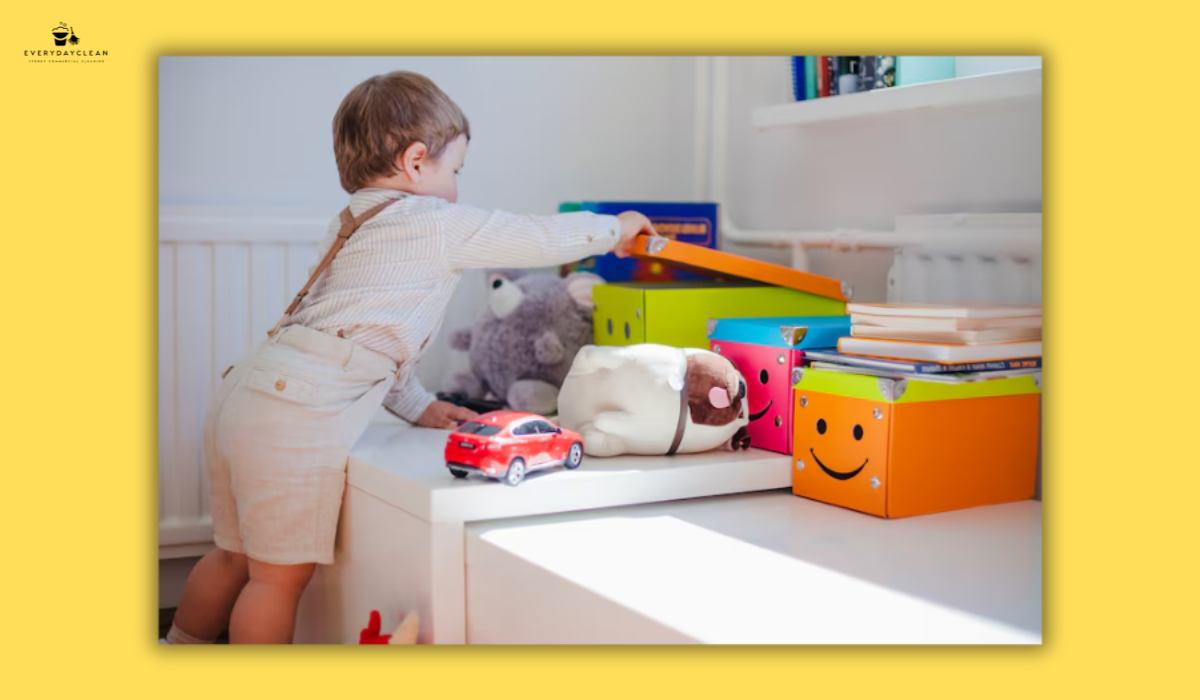
3. Monthly or Term-Break Deep Cleaning
Monthly deep cleaning tasks reset the facility’s hygiene baseline. During this phase, all areas receive a full restorative clean.
Steam-clean carpets and rugs to remove stains, allergens, and odours. Machine-scrub and reseal hard floors if necessary, and dust ceiling vents, lighting fixtures, and window tracks. Disinfect storage rooms and clean behind large furniture and appliances that are rarely moved.
Laundry rooms, kitchen storage, and mechanical areas should also be sanitised, ensuring washing machines and dryers remain free of mould and detergent build-up. These deep-cleaning rounds, typically scheduled during term breaks, prepare the facility for a new quarter with minimal disruption.
4. Toys and Shared Play Items
Toys are central to a daycare but also one of its greatest hygiene risks. Shared toys, building blocks, art supplies, and sensory tools must be cleaned frequently to prevent the spread of illness.
Separate toys into washable and non-washable categories. Hard plastic toys should be washed in warm soapy water, rinsed, and sanitised with an approved childcare disinfectant. Allow them to air-dry completely before storage. Soft toys should be machine-washed using hypoallergenic detergent and dried thoroughly to avoid mould.
Create a “clean and ready” toy bin to distinguish sanitised items from those needing attention. Rotating toys daily keeps children engaged while ensuring that only hygienic materials return to play areas.
5. Nap Mats, Cots, and Bedding
Clean rest areas are vital for preventing cross-contamination and skin irritation. Cot frames, rails, and waterproof mattresses should be wiped daily with mild detergent and sanitiser. Bedding and blankets must be washed after each child’s use or immediately if soiled.
When stacking mats, follow a simple rule: top-to-top, bottom-to-bottom — so used surfaces never touch clean ones. Always allow enough time for full drying before reuse, as damp materials harbour bacteria and odours. Maintaining clean and labelled bedding for each child ensures comfort and hygiene in equal measure.
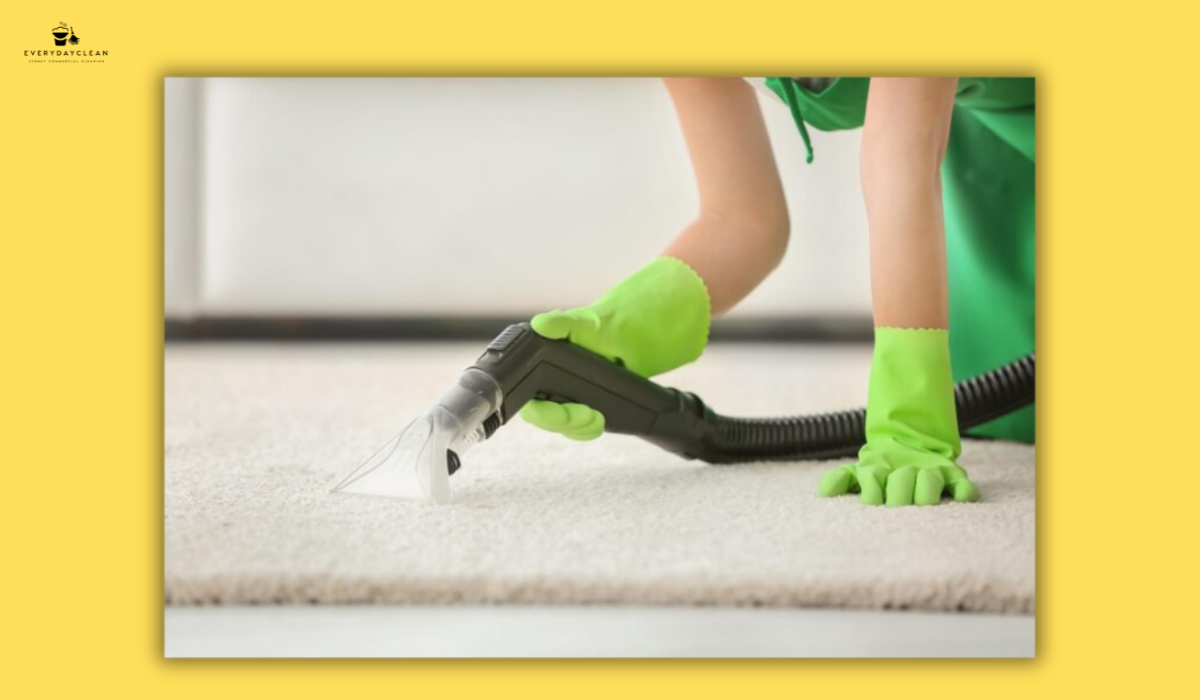
6. Bathroom and Nappy-Change Areas
Bathrooms and change stations are the most critical points of infection control in any daycare. These areas require both frequent cleaning and correct sequencing.
Always start by removing visible dirt, then clean surfaces with detergent before applying disinfectant. Change mats must be cleaned after each use, and disposable liners must be replaced immediately. Floors should be spot-mopped throughout the day and fully disinfected after closing.
Pay close attention to high-touch areas like tap handles, toilet flush buttons, and bin pedals. Supplies such as gloves, wipes, and liners should be stored within arm’s reach to ensure staff never compromise safety by cutting corners. A laminated cleaning guide near each station helps educators follow the same procedure every time.
7. Kitchen and Food-Prep Areas
Daycare kitchens require food-grade hygiene standards to ensure children’s meals are prepared safely. All benches, utensils, and appliances should be sanitised before and after use. Colour-coded cutting boards and cloths prevent cross-contamination between raw and ready-to-eat foods.
Refrigerators must be cleaned weekly, with thermometers checked to ensure proper storage temperatures. Microwaves and highchairs should be disinfected daily, while cupboards and pantry shelves should be wiped down and organised each week.
All waste bins in food areas should have foot pedals, liners, and lids to reduce contact and odours. Keeping this routine strict protects both compliance and reputation — two priorities for any childcare operator.
8. Laundry and Linen Management
Laundry is often overlooked but directly affects infection control. Soiled linens must be stored separately in sealed, labelled containers. Wash items in hot water using a detergent suitable for sensitive skin, and dry completely using heat or sunlight.
The washing machine itself should be cleaned weekly to remove detergent residue and prevent mould build-up. Fold and store clean linens in closed cupboards on sanitised surfaces. This ensures bedding, towels, and cleaning cloths remain hygienic until needed.
9. Outdoor Playground and Equipment
Outdoor play areas require regular cleaning to keep them safe and functional. Sweep and hose hard surfaces weekly to remove dust, leaves, and debris. Play equipment, slides, and climbing frames should be washed with mild detergent and sanitised where possible.
Inspect sandpits and soft-fall areas daily for debris or animal contamination, and rake them to maintain even coverage. Quarterly, schedule professional pressure washing of hard surfaces and cleaning of shade sails to prevent mould and stains. Clean, well-maintained playgrounds encourage safe, healthy outdoor play and reassure families about facility standards.
10. Implementation and Staff Training
A checklist is only effective if consistently implemented. Each staff member should understand their responsibilities, cleaning product use, and safety procedures. Create clear cleaning zones (e.g., Classroom A, Bathroom B) and assign daily sign-off sheets for accountability.
Provide training on correct dilution ratios, contact times for disinfectants, and safe equipment handling. Supervisors should review logs weekly and adjust frequencies based on occupancy levels, illness reports, or seasonal factors.
Communication is key — visible cleaning schedules posted in staff rooms and parent areas demonstrate commitment to hygiene and transparency.
FAQs About Daycare Cleaning Checklists
Before finalising your cleaning program, it’s natural to have questions about products, safety, and scheduling. Below are detailed answers to the most common queries raised by daycare managers and educators.
What cleaning supplies are safe and effective for daycares?
What cleaning supplies are safe and effective for daycares?
Use products that are non-toxic, low-odour, and free from harsh chemicals such as bleach or ammonia. For further product guidance, see our breakdown of eco-friendly cleaning products for schools that also meet daycare safety requirements.
How often should deep cleaning be done in a daycare centre?
Deep cleaning should occur monthly or during term breaks. This includes carpet shampooing, vent cleaning, high dusting, and full sanitisation of storage areas. Centres experiencing frequent illness may increase this frequency. Documenting deep-cleaning dates helps maintain compliance and makes audits straightforward.
How should toys and sensory items be sanitised?
Washable toys can be immersed in warm, soapy water, rinsed, and sanitised. Air-drying is preferred to prevent re-contamination. Battery-operated or fabric toys should be wiped with a damp cloth and disinfected safely. During illness outbreaks, increase toy cleaning frequency and rotate clean sets daily to maintain safety and variety.
Should a daycare hire a professional cleaning service?
Many centres combine in-house daily cleaning with outsourced professional services for weekly or term deep cleans. Professional cleaners bring specialised equipment, training, and consistency — especially useful during inspections or staff shortages. Outsourcing periodic cleaning ensures daycares meet hygiene benchmarks without disrupting educators’ core focus: child care and learning.
Final Notes and Next Steps
A daycare cleaning checklist works when it is visible, easy to follow, and reinforced through training and verification. Start with the daily, weekly, and monthly structure above, standardise products and tools, and keep evidence logs in each room. With this foundation, centres maintain a consistently clean, reassuring environment for families and staff—and make audits straightforward.
Need a tailored plan for your service? Everyday Clean designs, implements, and maintains childcare-safe cleaning programs across Sydney, including scheduled deep-cleans and evidence logs.
Author: Everyday Clean Content Team
Everyday Clean is Sydney’s trusted provider of commercial cleaning solutions, including schools, offices, gyms, and childcare centres. Our licensed professionals use advanced, eco-friendly equipment to deliver safe, compliant, and spotless results across all facilities. With deep experience in the education sector, we help schools maintain hygienic, student-ready environments that staff and families trust.
